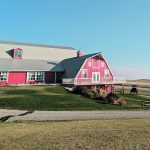The historical landmark has been turned into an event centre, but it has become much more than just a wedding venue
It was a tumble-down barn built in 1904. A historical landmark, maybe, but the property had been vacant for years. It was collapsing and the roof line resembled an old saddle. It was full of pigeon poop. But to Debora Rice-Salomons, it was a thing of beauty. Now the property boasts not just a restored […] Read moreStories by Freelance writer
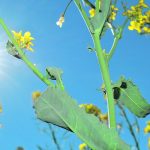
Plants find way to keep harmful solar rays at bay
Crops need sunlight for photosynthesis, but too much of a good thing can damage leaves and decrease their efficiency
Crops create food through the process of photosynthesis. But when leaves are exposed to full sunlight their green chlorophyll molecules can get more light energy than they may be able to handle. This can lead to damaged leaves costing the plant 10 to 30 percent of its ability to photosynthesize. However, plants have developed a […] Read more
War in Ukraine spans farm fields to battlefields
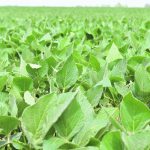
Soybean virus benefits bugs that eat the crop
Soybean thrips infected with the soybean vein necrosis orthotospovirus reproduce better than uninfected insects
A virus is a threat to many crops but, in a complicated relationship, the soybean vein necrosis orthotospovirus is an unexpected benefit to soybean thrips. Researchers at Penn State’s College of Agricultural Sciences have discovered that, when soybean thrips are infected with SVNV, they thrive longer and reproduce better than thrips that are not infected. […] Read more
Wartime experiences not forgotten
Author’s father served in Yugoslavia’s military during the Second World War before he was captured by the Germans
Remembrance Day always has a special meaning for me. As a boy growing up in rural Manitoba, I recall taking in the ceremonies at our local school and pausing at the appropriate time to honour those who gave their lives during military conflict. Then, as a member of a local air cadet squadron, I participated […] Read more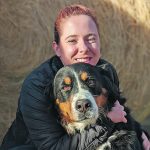
Farm sitters allow families to take a vacation
Making the expense of a quality, trustworthy farm sitter part of the vacation budget can lead to a more peaceful holiday
Whether it’s applying Vaseline to chicken combs in -30 C temperatures to prevent frostbite, wrangling horses out of fields they’re not supposed to be in, feeding the inside dogs and cats or hunkering down for a one-on-one session with a needy sheep, Gwen Mann has done it all for her various farm-sitting clients. “Horses, alpacas, […] Read more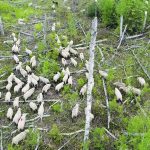
Old-school solution found to new tree trouble
Sheep put to work keeping grass under control in recently harvested timber stands as an alternative to herbicides
Tyler Niles never thought he’d see sheep helping to manage tree regrowth after timber harvesting. The silviculture forester with Weyerhaeuser in Grande Prairie, Alta., said the sheep are proving useful in helping new trees gain a better foothold in cutblocks. Cutblocks are areas with clear boundaries that have been approved for harvest. Companies like Weyerhaeuser […] Read more
Alta. gardener grows Canada’s biggest pumpkin
Don Crews of Lloydminster set a new Canadian record at this year’s Great White North Pumpkin Fair in Smoky Lake, Alta.
It was definitely a great pumpkin. Don Crews of Lloydminster, Alta., set a new Canadian record last month by growing a gourd weighing 2,537 pounds. Crews said he started the pumpkin in mid-April and it pollinated June 16. “It already had 14 or 15 feet of vine by then and I set back to just […] Read more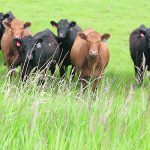
Grass-fed vs. grain-fed: what’s best?
Trade-offs dominate as researchers in California compare outcomes in various types of grass-fed beef production
Grass-fed beef production has seen a groundswell of support as public concerns over climate change have increased. This consumer ideology helped drive retail sales of fresh grass-fed beef in the United States from $17 million in 2012 to $272 million in 2016 and experts predict niche market and grass-fed beef sales will increase globally by […] Read more
Alberta Wheat Pool would have turned 100 next year
It’s been nearly a century since farmers formed the co-operative to reduce their dependence on private companies
This Oct. 29 would have been the 99th year for the Alberta Wheat Pool if it still existed, born out of a need for farmers to gain control over plunging grain prices. In 1923, farmers were forced to sell their grain at a lower price than their cost of production. The United Farmers of Alberta […] Read more
